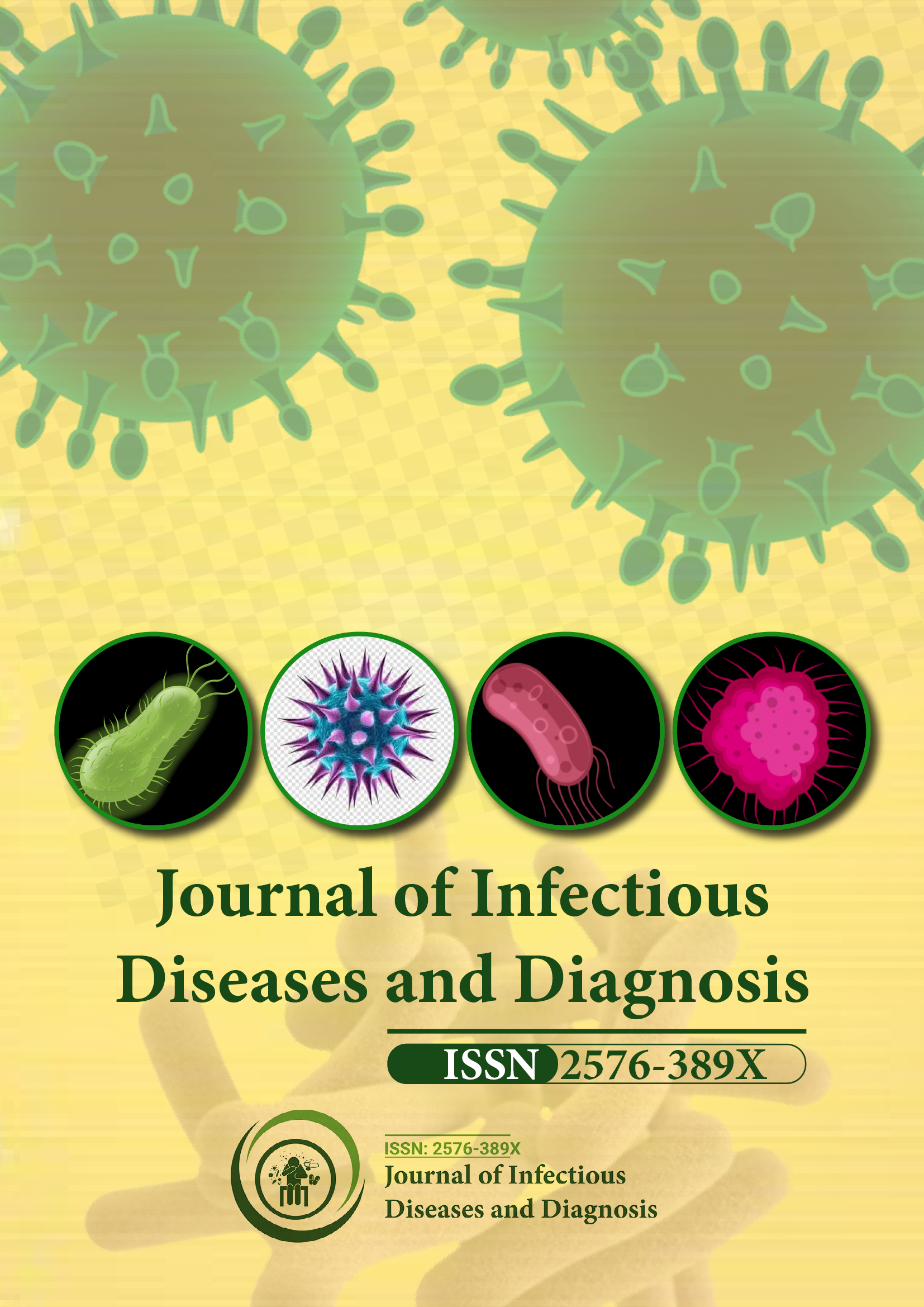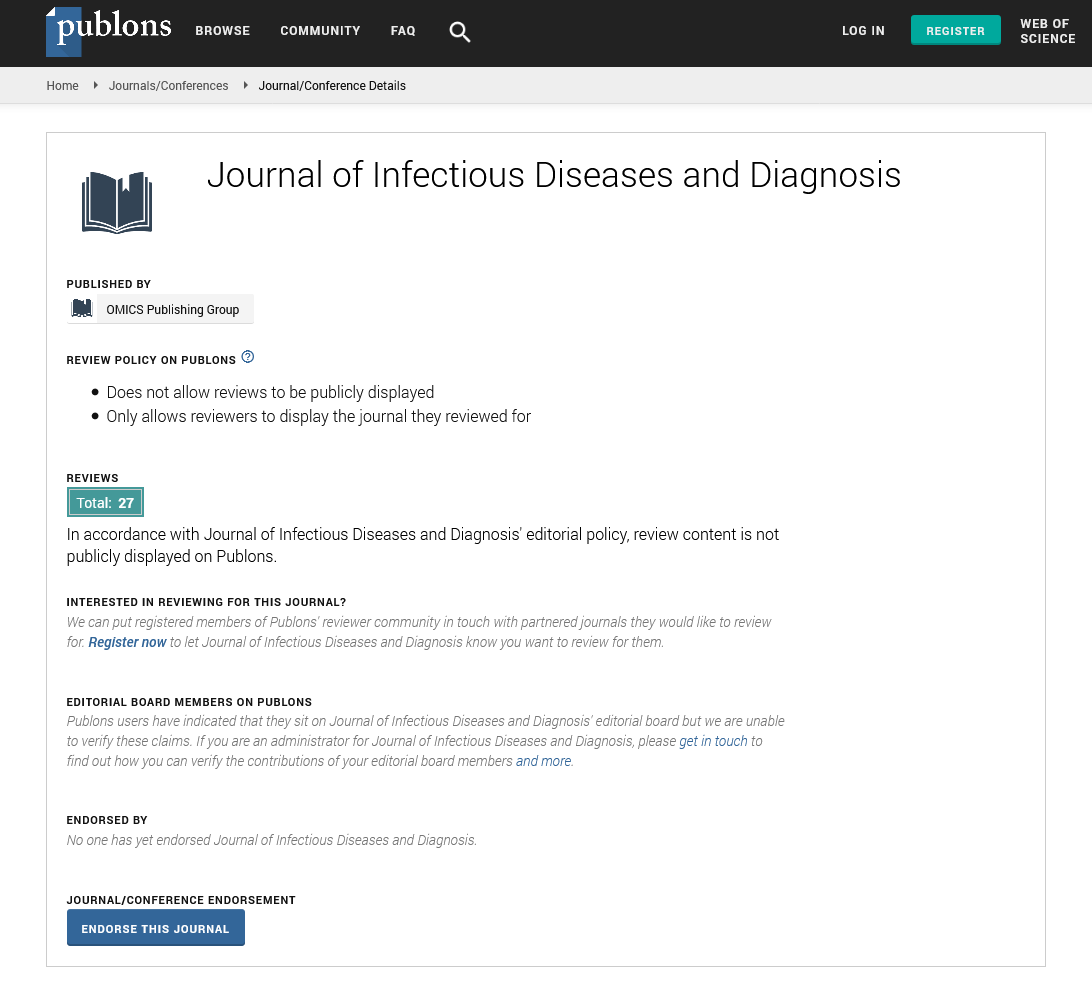Indexed In
- RefSeek
- Hamdard University
- EBSCO A-Z
- Publons
- Euro Pub
- Google Scholar
Useful Links
Share This Page
Journal Flyer

Open Access Journals
- Agri and Aquaculture
- Biochemistry
- Bioinformatics & Systems Biology
- Business & Management
- Chemistry
- Clinical Sciences
- Engineering
- Food & Nutrition
- General Science
- Genetics & Molecular Biology
- Immunology & Microbiology
- Medical Sciences
- Neuroscience & Psychology
- Nursing & Health Care
- Pharmaceutical Sciences
Perspective - (2025) Volume 10, Issue 1
Tuberculosis and Public Health: A Multidimensional Approach to Containment and Management
Nelson Samuel*Received: 01-Jan-2025, Manuscript No. JIDD-25-28524; Editor assigned: 03-Jan-2025, Pre QC No. JIDD-25-28524 (PQ); Reviewed: 17-Jan-2025, QC No. JIDD-25-28524; Revised: 24-Jan-2025, Manuscript No. JIDD-25-28524 (R); Published: 31-Jan-2025, DOI: 10.35248/2576-389X.25.10.312
Description
Tuberculosis (TB) remains one of the most persistent infectious diseases worldwide. Tuberculosis, caused by Mycobacterium tuberculosis, is a bacterial infection that primarily affects the lungs but can spread to other organs. The disease has existed for thousands of years, with evidence found in ancient human remains. Today, TB remains a major health burden, particularly in low-income countries.
Epidemiology
TB is a global health challenge, with millions of new cases reported annually. The World Health Organization (WHO) classifies TB as one of the top causes of death from infectious agents. The disease is more common in densely populated areas with poor healthcare systems. Risk factors include malnutrition, HIV co-infection and inadequate access to medical services. Drug-resistant strains have emerged, making management increasingly difficult.
Transmission
TB spreads through airborne particles released when an infected individual coughs, sneezes, or speaks. Prolonged exposure in enclosed environments increases the risk of infection. While many individuals who inhale M. tuberculosis remain asymptomatic due to latent TB infection, some develop active disease. Immunocompromised individuals are at greater risk of progressing to active TB.
Pathophysiology
Once inhaled, M. tuberculosis reaches the alveoli, where it is engulfed by macrophages. The bacterium can survive and multiply within these immune cells, leading to the formation of granulomas. In latent TB, the immune system contains the bacteria, preventing symptoms. However, in active TB, bacterial proliferation damages lung tissue, leading to symptoms such as persistent cough, fever, night sweats and weight loss. In some cases, TB can spread to extrapulmonary sites such as the spine, kidneys and brain.
Diagnosis
Early detection of TB is essential for effective treatment and to prevent transmission. Common diagnostic methods include:
Tuberculin Skin Test (TST): Detects previous exposure to TB but cannot distinguish between active and latent infection.
Interferon-Gamma Release Assays (IGRAs): Blood tests that identify immune responses to M. tuberculosis.
Sputum microscopy and culture: Identifies the presence of M. tuberculosis in respiratory samples.
Molecular testing (GeneXpert MTB/RIF): Rapidly detects TB and resistance to rifampicin, a key antibiotic.
Chest radiography: Assists in identifying lung abnormalities associated with TB.
Treatment
TB treatment involves a prolonged course of antibiotics to eliminate the bacteria and prevent relapse. The standard regimen consists of:
First-line drugs: Isoniazid, rifampicin, pyrazinamide and ethambutol for the initial phase, followed by isoniazid and rifampicin for the continuation phase.
Multidrug-Resistant TB (MDR-TB) treatment: Requires second-line medications, which are often more expensive and cause more side effects.
Directly Observed Therapy (DOTS): Ensures patients adhere to treatment by having healthcare providers monitor medication intake.
Prevention and control
Preventing TB requires a combination of public healthinterventions:.
BCG vaccination: Offers protection, especially against severeforms in children, but has variable effectiveness in adults.
Early diagnosis and treatment: Reduces transmission bypromptly identifying and treating infected individuals.
Infection control measures: Includes proper ventilation, use ofmasks and isolation of contagious patients in healthcaresettings.
HIV management: Since TB is a leading cause of death in HIVpositiveindividuals, antiretroviral therapy helps lower the risk of TB infection.
Public awareness campaigns: Educate communities about TBsymptoms, transmission and the importance of completingtreatment.
Challenges in TB management
Despite advancements in TB control, several challenges remain:
Drug resistance: The emergence of MDR-TB and extensively drug-resistant TB (XDR-TB) complicates treatment.
Healthcare access: Many TB patients live in regions with limited medical resources.
Stigma and discrimination: Fear of social exclusion discourages individuals from seeking medical help.
Co-infections: HIV and TB co-infection require integrated treatment approaches.
Future directions
Innovations in TB research focus on developing new vaccines, shorter treatment regimens and improved diagnostics. Novel drug formulations aim to reduce treatment duration and enhance patient compliance. Additionally, strengthening healthcare infrastructure in high-burden regions remains a priority.
Conclusion
Tuberculosis remains a major health issue, particularly in underprivileged regions. Effective control requires early detection, adherence to treatment and preventive measures. Addressing challenges such as drug resistance, healthcare accessibility and stigma will be essential in the global fight against TB. Ongoing research and policy improvements will play an important role in reducing the disease burden in the future.
Citation: Samuel N (2025). Tuberculosis and Public Health: A Multidimensional Approach to Containment and Management. J Infect Dis Diagn. 10:312.
Copyright: © 2025 Samuel N. This is an open-access article distributed under the terms of the Creative Commons Attribution License, which permits unrestricted use, distribution and reproduction in any medium, provided the original author and source are credited.

